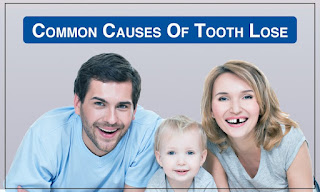Dental Cleaning: Benefits, Risks, Types and Treatment
People are known to be apprehensive and scared of dental cleanings due to the prodding, weird noises, and jaw discomfort whereas usually, teeth cleaning is a simple and painless process.
A detailed insight into what goes on during the process can help you to relax and be stress-free during the procedure.
Cleaning the teeth is usually one of the most underrated processes in our daily routines. In fact, studies prove that most people do not clean their teeth adequately and the cleaning methods and habits actually do more harm than good. This may lead to problems despite regular brushing and cleaning.
This makes it extremely important to have sessions with the dentist to get teeth cleaned, once every six months.
What is Dental Cleaning?
A key to optimal teeth health and a sparkling smile, dental cleaning focuses on the removal of plaque and tartar buildup from the teeth and under the gum line to prevent the likelihood of cavities, gum disease & tooth.
Dental cleaning also allows your dentist to look for any signs of tooth decay, oral cancer, or other oral health issues.
Dental cleaning is a non-surgical, routine procedure, and the time taken to accomplish it can vary from person to person, depending on the condition of the teeth & gums and the amount of scaling needed. However, a routine dental cleaning usually takes an hour or less.
What is the Procedure of Dental Cleaning?
Physical Examination
Physical examination is a very important part of the procedure, where the dentist thoroughly examines the teeth and gums prior to the dental cleaning, to check for any indications of gingivitis or additional concerns.
X-rays may be taken to identify any abnormality that may need treatment or a consultation with a specialist.
After collecting all the assessment data, the dentist makes the diagnosis of the present condition and creates a treatment plan to address the specific needs. The main factors that decide the frequency of X-rays or radiographs include:
Patient’s age
Current oral health
Risk factors for disease
Signs or symptoms of oral disease.
Once the examinations and suggestions are completed, the cleaning can begin.
What are the Various Types of Dental Cleaning?
There are primarily four different types of dental cleanings for different problems:
1. Prophylaxis Cleaning: This cleaning focuses on the prevention of the disease and is generally used in people with good dental health. The dentist removes the plaque and tartar from the front, back, and in between the teeth during a prophylaxis cleaning.
Recommended to be done at least twice a year, it can help to keep teeth and gums healthy. In high-risk patients, it may sometimes be recommended every 3 to 4 months also.
2. Scaling and Root Planing: Also known as deep dental cleaning, it is usually performed on patients affected with gum diseases such as gingivitis or periodontitis, this has two main steps:
Scaling: Plaque and tartar are removed from the visible surface of the teeth and also from the gum pocket below the gum line.
Planing: After all the gum pockets are cleared up of plaque and tartar, the root surface is smoothened to facilitate and make the reattachment of the gums to the teeth easier. In some cases, one may need local anesthetics and more than one dental appointment to conduct scaling and root planing.
3. Periodontal Maintenance: Extremely significant for the patients affected with gum disease, Periodontal maintenance helps to manage both periodontitis and gingivitis.
Both these gum diseases being progressive in nature, continue to worsen if not treated, and ultimately lead to tooth loss. Periodontal cleanings are conducted more often than preventive cleanings and are usually recommended to be continued until the proper management of the symptoms.
4. Gross Debridement: Gross Debridement is usually done in patients who have deferred dental visits or teeth cleanings for a long time, leading to a substantial buildup of plaque and tartar.
Removing the plaque with a scaler tool, the dentist uses a special electric tool to loosen and remove tartar, which had hardened because of being in place for a while. This is followed by regular prophylaxis cleaning.
5. Fluoride Treatment: In the final step of the cleaning process, Fluoride treatment provides the teeth with protection against cavities for several months.
The dentist places a foamy gel or a sticky paste into a mouthpiece that fits over the teeth and leaves it on the teeth for a minute or so.
Fluoride varnish may sometimes be painted onto the teeth with a small brush. This varnish hardens on coming in contact with saliva and one can eat and drink normally immediately afterward.



.jpeg)
Comments
Post a Comment